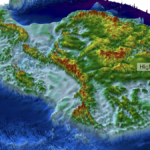Table of Contents
The article discusses the concept of nature’s thrift and the principle of least action in physics. It explains that the universe operates in an economic manner, where energy and momentum are conserved rather than deleted or destroyed. The principle of least action states that physical systems evolve along a path that minimizes or maximizes action based on the outcome of the process. This idea can be observed in various phenomena, such as the bending of light or the motion of planets. The article highlights that the principle of least action is still not fully understood empirically but has yielded advancements in various scientific fields.
Significance of World Thrift Day
World Thrift Day, observed on October 31, holds great importance as it aims to promote the habit of saving money and developing financial prudence among individuals. The day serves as a reminder to save for a rainy day and highlights the benefits of long-term financial planning.
The Principle of Least Action in Physics
In the realm of physics, the principle of least action plays a fundamental role in explaining the conservation laws and the economical nature of our universe. According to this principle, a physical system follows a path that minimizes or maximizes the action between two points in space-time, depending on the outcome of the process.
The key idea behind this principle is that nature operates with a purpose and tends to choose the most efficient path to achieve its objectives. For example, just like water adapting to the obstacles it encounters while flowing in a stream, various phenomena in the universe follow the path of least action by minimizing their energy expenditure.
Features and Objectives
The principle of least action governs the behavior of various systems, ranging from subatomic particles to galaxies. It helps explain the motion of planets around the sun, the bending of light during refraction, and even the shape of raindrops falling from the sky.
From a philosophical and metaphysical perspective, scholars and physicists continue to explore how nature optimizes its performance by minimizing effort. This principle serves as a mathematical tool in deriving equations of motion and has led to significant advancements in fluid mechanics, thermodynamics, string theory, classical electrodynamics, quantum field theory, and Morse theory in mathematics.
Effects and Prospects
The principle of least action offers a profound understanding of the underlying mechanisms of our universe. By comprehending the economical nature of nature itself, scientists can enhance their knowledge and make further progress in various scientific fields.
Fun Fact: Nature’s Thrift in Everyday Life
While exploring the principle of least action, it’s fascinating to observe how nature’s thriftiness manifests in our daily lives. It’s similar to the way we are taught to be thrifty and save money for the future. Just as our universe conserves energy, we can conserve resources and make efficient choices in our personal lives.
Conclusion
The concept of the principle of least action showcases the intricate workings of our universe, where economic efficiency is deeply embedded. From the movement of celestial bodies to the smallest particles, nature demonstrates its thrifty nature, inspiring us to embrace saving and optimal resource management in our lives as well.
Mutiple Choice Questions
Question 1: When is World Thrift Day observed?
a) January 27
b) October 31
c) April 15
d) December 25
Explanation: World Thrift Day is observed on October 31 to promote saving money and developing a sense of financial prudence.
Question 2: What is the principle of least action in physics?
a) The conservation of energy and momentum
b) Minimizing the action involving the energy of a physical system
c) Optimizing performance through minimum effort
d) Wielding the principle only as a mathematical tool
Explanation: The principle of least action in physics states that a physical system between two points in space-time evolves along a path that minimizes or maximizes the action depending on the outcome of the process.
Question 3: How does nature follow an economical path according to the principle of least action?
a) By planning and consciously choosing the optimal path
b) By adapting to the environment and minimizing energy expenditure
c) By maximizing the action involving its energy
d) By empirically understanding the principle through experiment
Explanation: Nature follows an economical path by adapting to the environment and minimizing energy expenditure. This can be observed in various phenomena such as the motion of planets and the behavior of water.
Question 4: What areas of study have benefited from the principle of least action?
a) Fluid mechanics, thermodynamics, and string theory
b) Classical electrodynamics and quantum field theory
c) Morse theory in mathematics
d) All of the above
Explanation: The principle of least action has yielded bounties in the study of fluid mechanics, thermodynamics, string theory, classical electrodynamics, quantum field theory, and Morse theory in mathematics.
Question 5: What is the role of the principle of least action in metaphysics and philosophy?
a) To optimize performance through minimum effort
b) To empirically understand the principle through experiment
c) To derive suitable equations of motion
d) Scholars continue to debate its significance in nature
Explanation: The role of the principle of least action in metaphysics and philosophy is still debated by scholars. It has not been empirically understood through experiment and is currently used as a mathematical tool or to derive suitable equations of motion.



